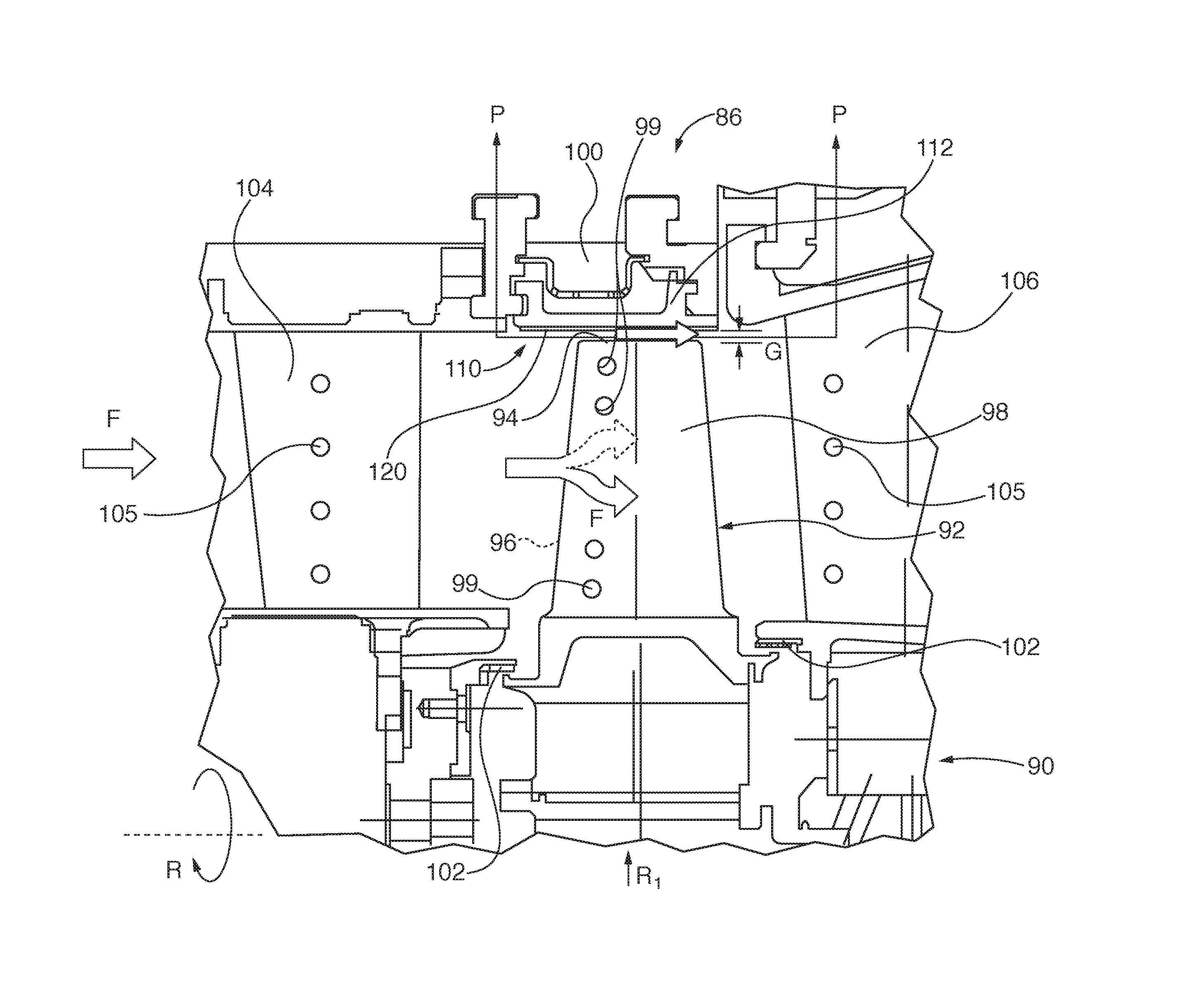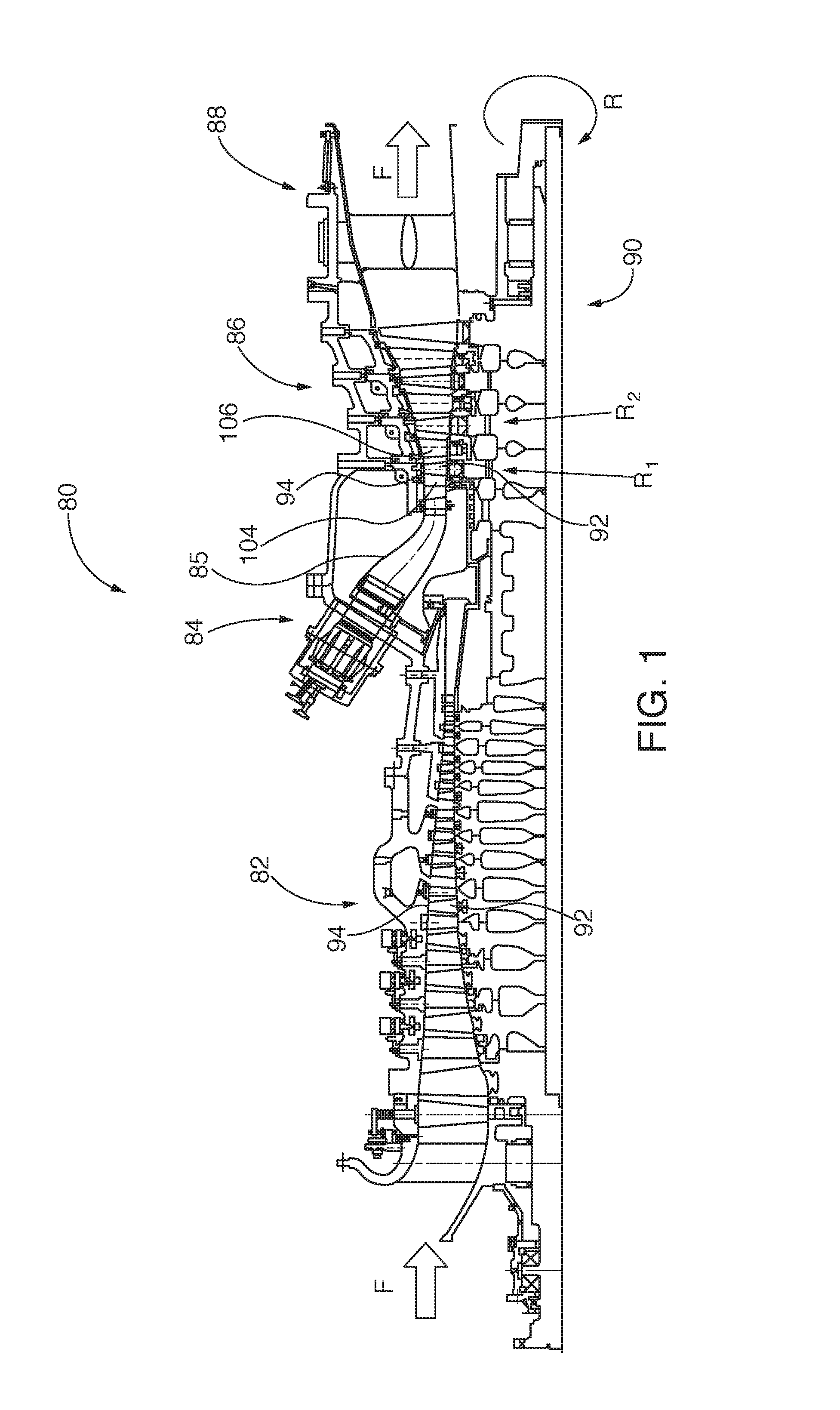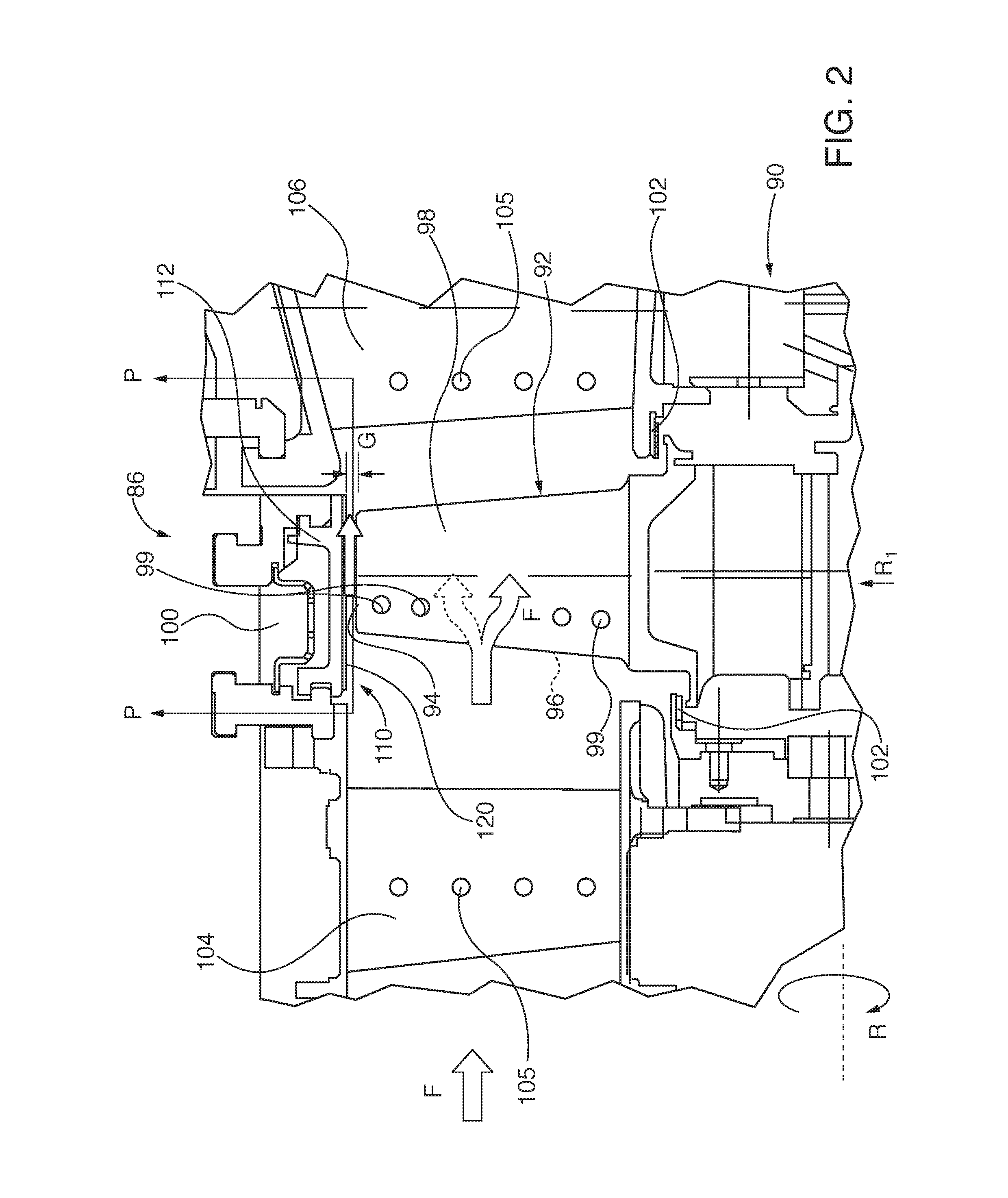Turbine component thermal barrier coating with crack isolating engineered groove features
a technology of thermal barrier coating and engineered groove, which is applied in the direction of machines/engines, stators, mechanical equipment, etc., can solve the problems of tbc layer structural integrity, cracking of tbc layer as well as tbc/turbine component adhesion loss at the interface of dissimilar materials, and achieve the effect of enhancing tbc layer adhesion
- Summary
- Abstract
- Description
- Claims
- Application Information
AI Technical Summary
Benefits of technology
Problems solved by technology
Method used
Image
Examples
embodiment 272
[0102]Dimensions of an exemplary chevron-shaped MSF 272 are shown in FIG. 10. The chevron-shaped MSFs 272, having closed continuous leading edges 273, trailing edges 274, top surfaces 275 facing the rotating turbine blades. Staggered rows of chevrons 272 create a tortuous path for hot gas flow. Each chevron shaped MSF embodiment 272 has width W, length L and Height H dimensions that occupy a volume envelope of 1-12 cubic millimeters. In some embodiments, the ratio of MSF length and gap defined between each MSF is approximately in the range of 1:1 to 1:3. In other embodiments, the ratio of MSF width and gap is approximately 1:3 to 1:8. In some embodiments, the ratio of MSF height to width is approximately 0.5 to 1.0. Feature dimensions can be (but not limited to) between 3 mm and 10 mm, with a wall height and / or wall thickness of between 100-2000 microns (μm).
[0103]As with the blade tip abradable components embodiments shown in FIGS. 3-8, MSF heights can be varied within the PMPP for...
embodiment 470
[0122]In FIG. 38 the turbine component 440 has an EGF 442 that circumscribes a plurality of cooling holes 99 / 105, which is analogous to a ditch or moat surrounding the hole cluster. Propagation of any surface delamination within the cluster of cooling holes 99 / 105 surrounded by the EGF 442 is confined within the EGF 442. In the embodiments of FIGS. 39-41, the EGFs do not fully surround any one cooling hole, but delamination spread is likely to be arrested by one or more partially circumscribing EGSs near one or more of the holes. In FIG. 39, one or more of horizontally oriented EGFs 452 or vertically oriented EGFs 454 in the turbine component 450 TBC outer layer surface partially or fully surrounds each of the cooling holes 99 / 105. In FIG. 40, the turbine component 460 cooling holes 99 / 105 are circumscribed, fully or partially, by the undulating ribbon-like EGFs 462 or 464. In the turbine component embodiment 470 of FIG. 41 a combination of linear EGFs 474 and semi-circular or arcua...
embodiment 560
[0130]In FIG. 48, the turbine component embodiment 560 has a curved surface substrate 561, such as on the leading edge of a turbine blade or vane. A bond coat BC 562 is applied to the substrate and includes a three-dimensional planform array of waffle pattern-like ESFs 564 that define wells or holes for anchoring of a bi-layer thermal barrier coat 566. The TBC 566 includes a lower thermal barrier coat (LTBC) 567 and an outer thermal barrier coat (OTBC) 568. EGFs 569 are cut into the outer surface of the OTBC 568 in a waffle-like three-dimensional planform array that does not necessarily have to be aligned concentrically with the ESF 564 array pattern within the TBC layer 566. If so aligned, each bi-layer three-dimensional segment that is captured in the similar groove formed within the ESFs 564 is analogous to a kernel or corn or maize that is embedded within its cob.
[0131]The turbine component embodiment 570 of FIG. 49 adds a CMAS-resistant layer 580 to the surface of the OTBC laye...
PUM
| Property | Measurement | Unit |
|---|---|---|
| combustion temperatures | aaaaa | aaaaa |
| thickness | aaaaa | aaaaa |
| thickness | aaaaa | aaaaa |
Abstract
Description
Claims
Application Information
 Login to View More
Login to View More - R&D
- Intellectual Property
- Life Sciences
- Materials
- Tech Scout
- Unparalleled Data Quality
- Higher Quality Content
- 60% Fewer Hallucinations
Browse by: Latest US Patents, China's latest patents, Technical Efficacy Thesaurus, Application Domain, Technology Topic, Popular Technical Reports.
© 2025 PatSnap. All rights reserved.Legal|Privacy policy|Modern Slavery Act Transparency Statement|Sitemap|About US| Contact US: help@patsnap.com



